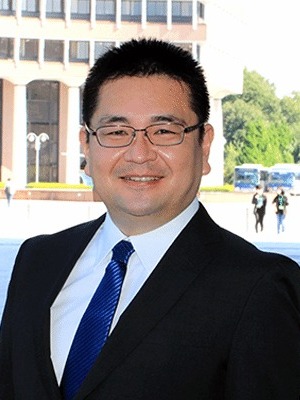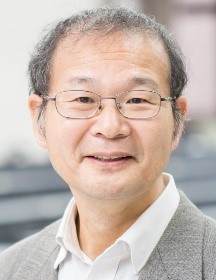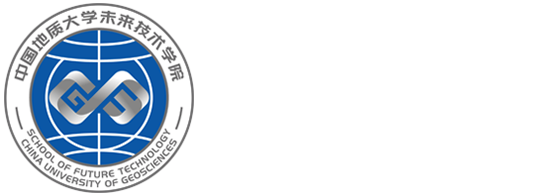报告时间:2024年3月14日(星期五)上午09:00
报告地点:中国地质大学双创中心3楼未来技术学院学术报告厅
(一)
Title: Advancements in Wearable Biosensors and Volatile Organic Compound Bio-imaging Systems for Healthcare Monitoring
Presenter: Takahiro Arakawa, Associate Professor
Affiliation: Department of Electric and Electronic Engineering, School of Engineering
Tokyo University of Technology, 1404-1 Katakuramachi, Hachioji City, Tokyo 192-0982,Japan
E-mail: arakawath@stf.teu.ac.jp
Abstract
The measurement of biophysical quantities of the human body has garnered significant attention in the medical and healthcare fields. Wearable sensors have emerged as promising tools for monitoring relevant parameters in healthcare, sports, and medical applications. Leveraging biophysical information with these systems is expected to enable proactive health management, thereby improving public health and reducing medical expenditure. This paper discusses two types of wearable biosensors: tear and saliva glucose biosensors. Our group has developed soft contact lens biosensors for tear chemicals and oral cavity biosensors, such as mouthguard biosensors for salivary analysis. Challenges related to integrating biosensors into monitoring biological information and daily medicine are also addressed. Moreover, recent advancements in analytical devices have facilitated the measurement of minute amounts of odorous materials and volatile chemical compounds. Human breath and skin volatiles, including gases from halitosis and body odor, contain compounds indicative of metabolic processes and specific ailments. Measurement of these volatile biological compounds holds promise for simplifying metabolic capacity evaluation, medical diagnostics, and disease screening. We have developed a novel two-dimensional fluorometric imaging system for detecting ethanol vapor released from human breath and palm skin. This imaging system measures ethanol vapor concentrations by analyzing the fluorescence intensity of nicotinamide adenine dinucleotide (NADH) through an enzymatic reaction induced by alcohol dehydrogenase. The NADH fluorometric imaging system enables real-time, two-dimensional imaging of ethanol vapor distribution at ppb concentration levels. We applied this imaging system to measure breath ethanol vapor and skin ethanol vapor from a human palm, demonstrating rapid and accurate responses with visible measurements. This technology holds promise for real-time analysis of metabolism function in the near future.
Biography
Dr. Takahiro Arakawa is currently an Associate Professor of Department of Electric and Electronic Engineering, Tokyo University of Technology since 2021. He received his BS, MS degrees from Waseda University in 2002 and 2004, respectively. He finished the Ph.D. course in Nano-science and Nano-engineering, and received the Ph.D. degree in “Microfluidic system for cell analysis” Waseda University in 2007. In 2008, he joined a post-doctoral research fellow of Japan Society for the Promotion of Science (JSPS, PD) at the Laboratory of Bioanalytical Chemistry the University of Tokyo. Since 2009, he was an Assistant professor of Tokyo Medical and Dental University (Department of Biomedical Devices and Instrumentation). He has been a Junior Associate Professor since 2014. He joined Departments of Electrical Engineering and Bioengineering at University California Los Angeles as a visiting researcher from 2017 to 2018. His research interests include microfluidics, bio micro electro mechanical system (Bio-MEMS), biosensors, optical system and bio microsystems for medical applications.
(二)
Title: Traction Control for Electric Vehicles Starting on an Uphill Road by Torque Function Control with Bias Torque
Presenter: Shigeyuki Takagi, Professor
Affiliation: Tokyo University of Technology, Japan
Abstract
We have proposed the new torque function control (TFC) method with the bias torque to improve the acceleration performance and the slip suppression performance of electric vehicles (EVs) starting on an uphill road, and obtained the method how to optimize the bias torque. This optimization gives the maximum bias torque satisfying that there is only one vehicle stationary point on the stable area of the road friction function. We evaluated the effectiveness of the TFC method using the optimized bias torque for EV starting on an uphill road by simulations and experiments. In the simulations, the slip phenomenon is suppressed rapidly and continuously due to the optimized bias torque. In the experiments using the EV carrying one person, when using the proposed TFC method with the optimized bias torque, the vehicle speed is 1.7 times at 3 s compared with the EV accelerates with slipping.
Biography
Prof. Takagi received the B.S.E.E. and M.S.E.E. from Nagoya University. He joined Toshiba Corporation in 1984 and developed a high-voltage, high-current semiconductor switch power supply for gas lasers. He became a professor in the Department of Electrical and Electronic Engineering, Tokyo University of Technology in 2015. His research interests include power electronics, batteries, digital controls, simulation, and electric vehicles. Prof. Takagi is a member of the Institute of Electrical Engineers of Japan (IEE of Japan) and the Japan Society of Applied Physics.

